A small dictionary of Finnish drinking words
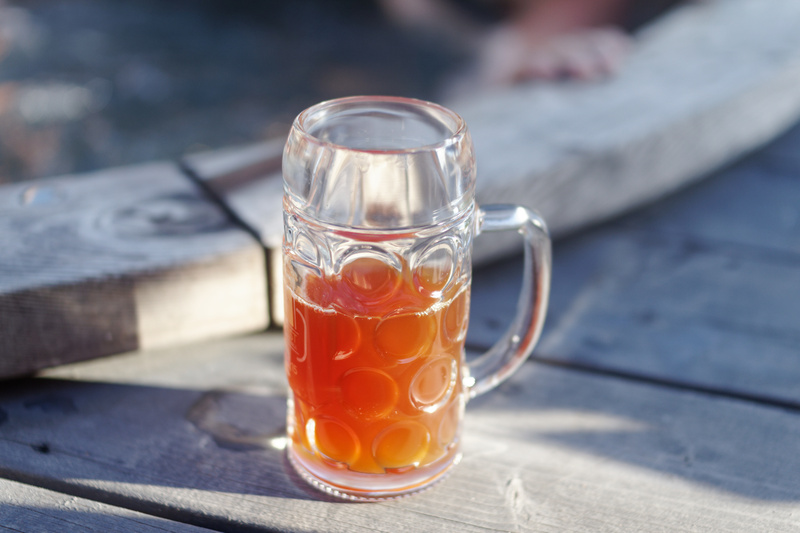
Mug of sahti, Finnish farmhouse ale, brewed with hot rocks |
You know how the Inuit supposedly have dozens of specialized words for different kinds of snow? It comes as no surprise to people who know the Finns that they have lots of specialized words for different kinds of drinking and alcohol. Here is a little dictionary of these drinking terms, collected on an expedition through the Finnish countryside in the summer of 2018, hunting for Finnish traditional farmhouse ale, sahti.
In Norway the standard jokes about stupid people are told about the Swedes, but there is a separate genre of drinking jokes. Those are told about the Finns, who by convention must be named Pekka and Toivonen. For maximum effect their lines should be spoken in Finnish-accented Swedish, delivered in a slow, bass voice enunciating every letter carefully and distinctly, heavily rolling every 'r'. Sadly, the fantastic sound of spoken Finnish gets lost here. You'll just have to imagine that part.
Before I begin I need to make it clear that this is not a joke. These are real, Finnish words that Finnish people know and use. I even tested a couple of them on random Finns, asking things like "what does suojakänni mean?" and got responses that matched what I'd been told.
I'll say it again: these are real words. Honestly.
Kalsarikänni
Probably the best-known drinking word. It means "getting drunk at home in your underwear with no intention of going out." "Kalsari" is underwear, and "känni" means drunk, so it's literally "underwear-drunk," but the full meaning is actually this specific.
The Finns clarified that it still counts as kalsarikänni if you're drinking together with someone else.
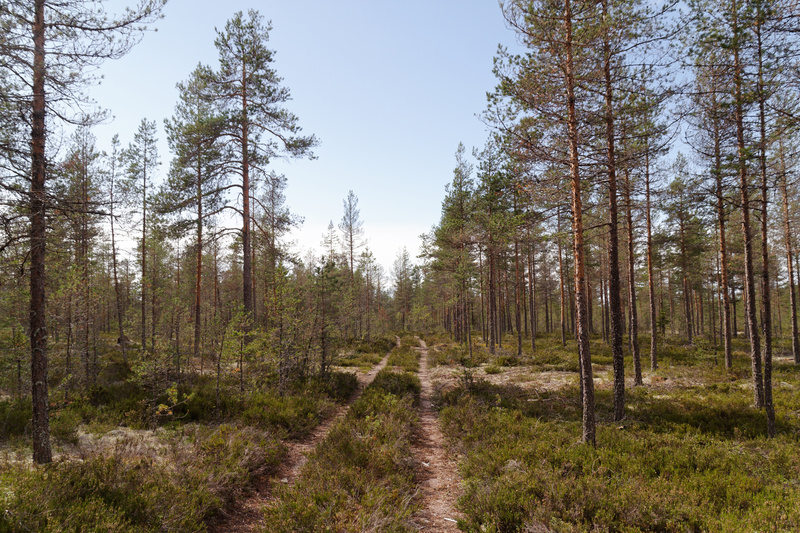
Deep forest pines, near Isojoki |
Korpikuusenkyynel
A slang expression for moonshine, illegally produced strong liquor, something Finland has had a lot of. The interesting part is the literal meaning of the word, which is something like "tears of the deep forest spruce." It's a very poetic term, since it is both evocative and very accurate.
"Korpi" means a remote part of the forest, far from any house or human habitation. This was of course an excellent place to hide an illegal still, and it was quite common to do just that.
"Kuusen" is spruce, a very common tree in Finland. You might shelter the still underneath a big spruce.
"Kyynel" is tears. When you distil liquor, the alcohol condenses inside the metal tubes of the still, and slowly drips out, rather like tears.
So "tears of the deep forest spruce" is actually a brilliant term for Finnish moonshine. Literally, "deep in the forest where nobody lives-spruce-tears."
It's also the name of a Finnish metal band, inevitably.
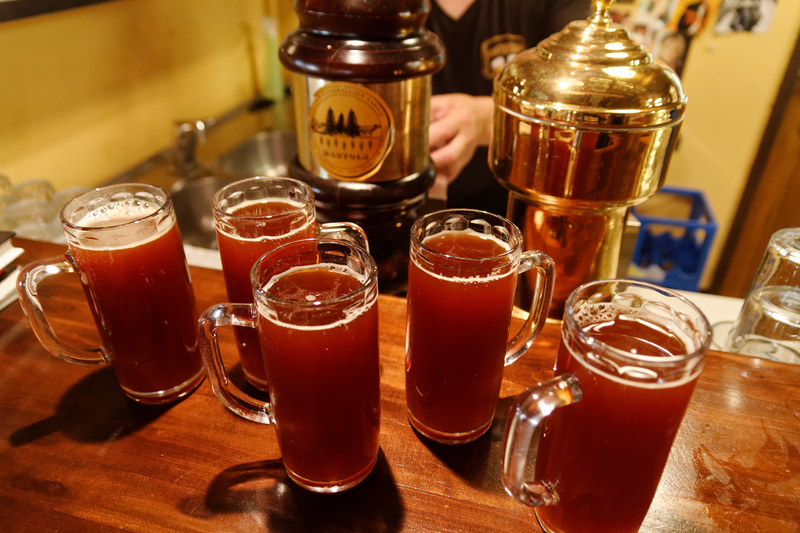
We're about to get a rocket start on the nousuhuamalat at Sahtikrouvin in Hartola. |
Nousuhumalat
From "nousu", uphill run, and "humalat", drunk, meaning a gradually rising level of intoxication. The Finns view this as the ideal state of being to achieve a successful party. Note that it does not mean being as drunk as possible, which of course tends to cut off the parties as people fall asleep, start vomiting, and so on. The ideal is seen as a gradual, evenly rising alcohol amount of alcohol in the blood.
If you get off the nousuhuamalat you're likely to get tired and dispirited, and ruin the mood, which is frowned upon. If you mess up really badly you'll find you're on the laskuhumalat, which is even worse.
Laskuhumalat
"Lasku" means downhill run, so this is the opposite: "downhill run drunk," having a falling level of intoxication. Not a complete stop to drinking, but drinking too slowly, so that the level of alcohol in your blood is gradually declining. People generally don't do this on purpose, but if you start running out of money or something to drink it can happen.
Laskuhumalat is considered bad, because it makes people fractious and likely to get into arguments. The Finns blame the inevitable taxi queue fights on laskuhumalat.
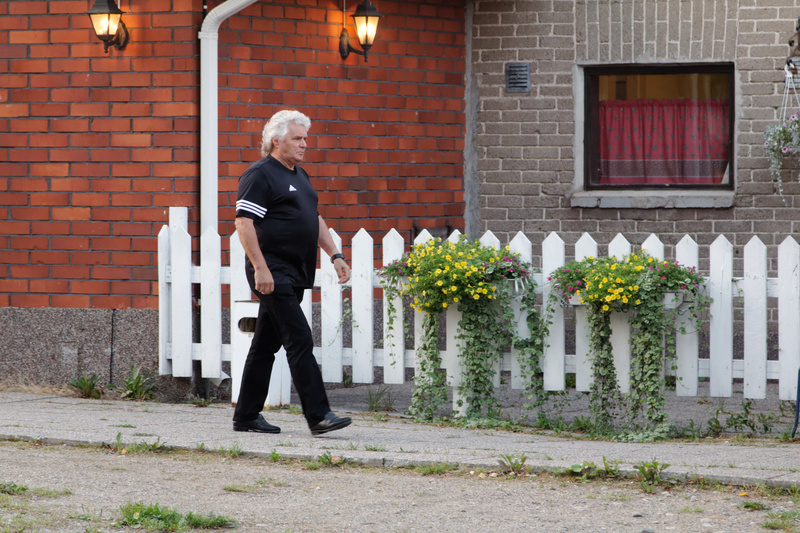
Did this guy, heading into the Sahtikrouvin bar in Hartola, pohjat? He might well have. |
Pohjat
"Pohja" literally means "bottom", and here it has been verbed, so you're saying "bottoming." It refers to a money-saving tactic. Drinking in bars is expensive, in part because of the alcohol taxes, but you still want to go to the bar, and be drunk in the bar, but you don't want to buy a lot of drinks there. So what to do? You drink enough before going to the bar, so that you only have to buy a couple of drinks there.
The naïve way to approach this is to get drunk at home, then go to the bar. The problem with this method is that the bars usually have bouncers, and so you might not get in if they see you're already drunk. The Finns, of course, have solved this problem: bring vodka in a bottle, chug it all down just before you get to the bar (bottom the bottle), throw away the bottle, and enter the bar before you have time to get drunk. Once inside, the vodka in your stomach will work its magic without you having to buy anything expensive.
Suojakänni
This literally means "defensive drunk" and the idea is that you're going to some kind of party tomorrow, and you're worried that you're going to get a little too drunk at the party. You're Finnish, remember. So the brilliant trick is that you get drunk today! That way, you'll be able to handle more alcohol tomorrow, and you won't get too drunk at the party. It's this tactic that's known as suojakänni: you're getting defensive drunk today to ward off problems tomorrow.
It has another meaning, too.

These guys probably skipped the suojakänni and are now deep in the grip of laskuhumalat. |
Nenätippu
This one refers to something that, at least historically, didn't get you drunk: small beer. Literally it means "nosedrops" ("nenä", nose, "tippu", drops), and how that refers to small beer is a little complicated.
When you make sahti, you use a "kuurna", a trough with a hole at one end, to filter the sweet wort from the malts. The wort is what gets fermented into sahti. At the end of the kuurna is a small protrusion that the wort runs over before it drips down into the bucket you use to collect it. That protrusion is known as the "nenänoka" (nosebeak), because it kind of looks like a nose or beak.
Now, the way you make small beer is that you first run off the wort for the sahti. This is the sweetest, and will make the strongest beer. But there's still sugar left. So now you run off a second wort, that will be much less sweet and make a much weaker beer, which is the small beer, the "nosedrops".
It's known as nose drops because toward the end the wort is going to run very slowly, dripping off the nosebeak. Again, a surprisingly accurate image.
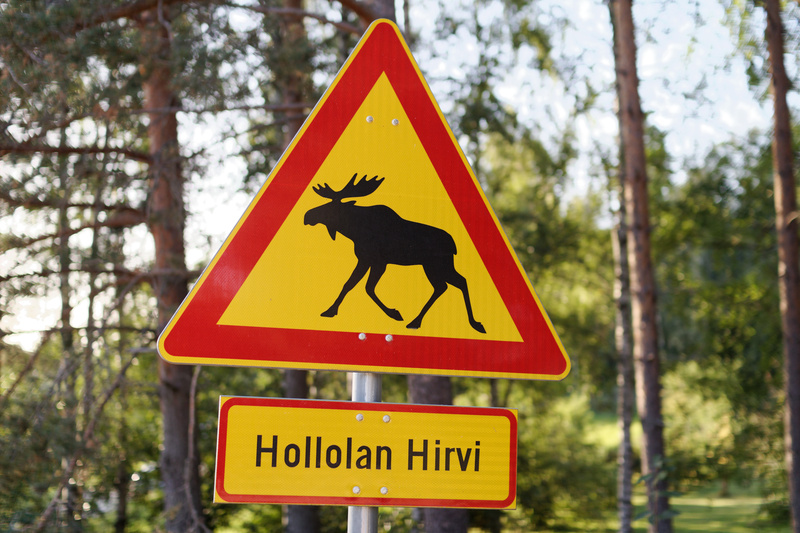
"The moose of Hollola," a fantastic sahti bar in Hollola, where you can also get hirvikallion takunen. |
Hirvikallion takunen
If you're not Finnish it takes a little practice to be able to say it. The meaning of the first word is fairly straightforward, though. "Hirvi" means moose, and "kallio" is rock.
"Takunen" means "made behind." No, it really does. You see, Finnish doesn't use prepositions. Instead, the grammatical case system is used to indicate position/direction. In the airport, you'll see the gate referred to in Finnish as "portti". When you need to go to the gate, the screens say "portille", which really is "gate-toward".
So literally this means "made behind the moose rock", which means the rock is deep in the forest where the moose are, and someone hid a still behind the rock. The connection with korpikuusenkyynel should be obvious. Which one is easier to say I'm not quite sure, and you might want to just go with "vodka".
Mika (see below) says he's never heard this term, so it may be specific to the Hollola area.
Acknowledgements
Mika Laitinen and Ilkka Miettinen were both on the expedition and were very helpful in suggesting words, explaining their meanings, and helping me get the spelling right. Mika also kindly proof-read this article to check all the Finnish details.

Mika on the nousuhuamalat at Hollolan Hirvi. |
Further reading
Mika also informs me that a survey was done on alcohol related words and proverbs in 1976-1977. The results were published in a 270-page book titled Kippurahäntä - Alkoholiaiheisen perinnekilpailun satoa, editors Maria Hakokorpi-Jumppanen and Matti Virtanen. The last 7 pages of the book list 948 different Finnish words for drunkenness or drunken persons.
Similar posts
Brewing with Olavi the champion
We drove along dirt roads through seemingly empty forest for half an hour, the dust curling lazily behind us
Read | 2021-05-22 13:26
Seto kingdom day
In south-eastern Estonia, and across the border in Russia, lives the Seto people
Read | 2017-11-05 10:36
The sahti championship in Karvia
A large, empty sports field, with some cars parked round the edge
Read | 2020-09-27 10:21
Comments
Janne - 2020-08-19 05:05:06
Great article, laughed out loud a couple of times :)
I think that mentioned alternative meaning for "Suojakännit" is actually the most common one. I had never heard about that "defensive drunk" theory, but suojakännit is commonly used to describe a way to avoid responsibilities or being a driver for friends. I have used it myself during multiday midsummer parties to explain my wife why I cannot participate in cleaning of summer cottage or cooking food. Or emptying the outhouse....
Wilbur - 2020-08-19 14:29:51
I like to think Kalsarikänni is the Swedish version of hygge.
Michelle - 2023-07-30 18:17:53
I used this website to finally understand what my great grandfather always used to say. He was full Finn. His family moved here in the early 1900s. My mom has Ellis or Angel island documentation somewhere. He was the last child born and born here. His family was dedicated to learning English. He didn’t speak as much Finnish as his parents and didn't really use it that much. He always referred to his daily cocktail as a "rock a Nani". I didn’t think to Google what it could mean in Finnish until now, all these years later. I have a degree in Language Studies and internet searches came out when I was in middle school. But I didn’t think to Google Finnish words for cocktail until today! I notice there are two forms of 'rakanni' here so I'm not sure which one he was actually saying. He did usually have just his undershirt and boxers on if no one was home though. He had pants on if we were there. Obviously, he meant one of these. Thanks!